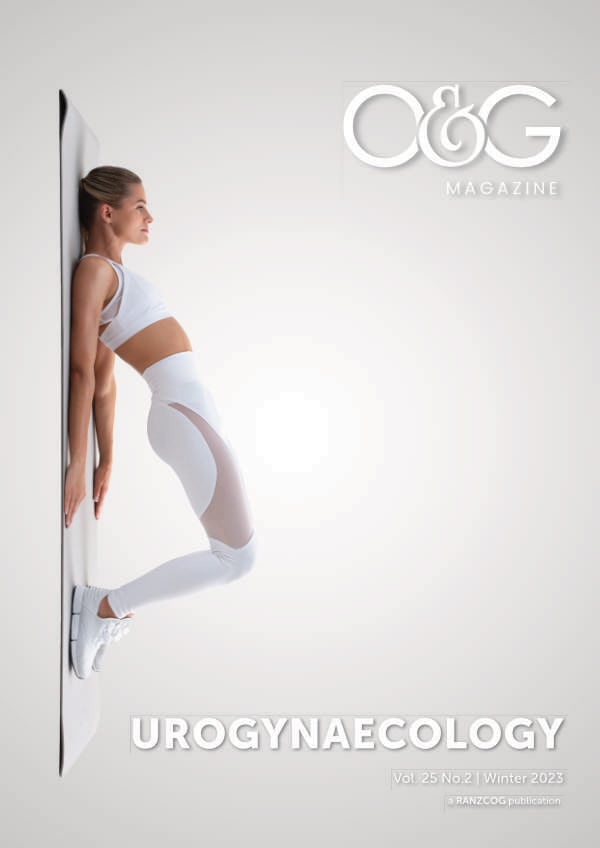Members of the general public, like myself, would rarely know about their pelvic floor, its function and role or how to recognise when it is stressed or injured. It took my Pelvic Organ Prolapse (POP) diagnosis to make me appreciate the amazing set of muscles that make up the pelvic floor. I wish I had known about them sooner.
Six years after giving birth for the first time, I found out I had torn my levator ani muscles, and the muscles in my pelvic floor were tight and weak from trying to keep everything together. It was my women’s health physiotherapist who recommended that I see a gynaecologist to confirm what she suspected. The diagnosis came as a total surprise to me. It was even more of a shock to find out that I had possibly torn these muscles during childbirth when I had a vacuum assisted delivery. Even with an amazing delivery team, I felt let down and was disappointed that there were no questions or follow-up care related to the pelvic floor during my second pregnancy and delivery.
For many people who are diagnosed and living with POP, it is life altering! Once you are diagnosed with POP you are bombarded with information and comments on what to do, and what you can’t do. It is confusing, isolating and has a huge impact on mental health.
Those first three years after my diagnosis, it felt like there were a million restrictions on living life, as it could worsen my POP. Initially, I found it hard to find information and easily swap/modify daily routines and tasks. A daily routine like picking up the kids, groceries and washing the dishes, now required extra mental load to maintain posture, breathe and relax pelvic muscles. The good news is that over time, this did get easier and more habitual; it just took a long time.
The road to regaining a functional pelvic floor can be long and requires more than just a doctor or a gynaecologist to be supported in this journey. The challenges and barriers to finding help are immense and the differences in the resources and support available vary between State, Country and insurance coverage. In Australia and New Zealand, some of the challenges are the cost (including travel and/or babysitting) and time to attend appointments and finding someone with the relevant expertise locally or online.
Due to the many hurdles and the messaging out there, many with POP learn to bear with the pain and discomfort. However, this is changing, partially due to social media, as women can connect with others who are on a similar journey. It also provides the opportunity to connect with health professionals that have strong online presences. I have been a part of many wonderful online support groups that have developed their own set of amazing tools and resources to help their community live a happier life with POP. It is through these groups and by following experts that I felt empowered to piece together my own plan and seek help to strengthen my pelvic floor.
I am very aware that I am privileged. Much of the information about the pelvic floor is in English, I lived in an urban area, had access to a car, internet, a phone, an income, support to look after the kids when I went to appointments and knew/ felt safe enough to look for support online. I got into advocacy because I think people with POP, regardless of gender and age, should have access to the same care and resources that I did, and we all should have some awareness of our pelvic floor.
Women’s health physiotherapists are a key part of POP management, and one of many health professionals that a woman will need to see to understand their pelvic floor and management plan. It was great to hear that a hospital in Christchurch, New Zealand had increased the number of women’s health physiotherapists in their department. These physiotherapists triaged and provided ongoing support for the women who attend the clinic. In doing so, the gynaecology team were able to see more women and reduce the referral waiting times, without reducing the care outcomes.
At present, 1 in 2 women who have given birth and 1 in 3 female athletes, will experience POP. Simply being female is one of the risk factors of developing POP. I often wonder what the statistics would look like if we were more educated and aware of the pelvic floor from a young age. POP can happen to anyone, it just happens to women more than men and children.
The risk factors for pelvic floor dysfunction are often not discussed in a doctor’s office. An example is a woman presenting with chronic IBS or constipation will have a treatment plan focused on managing symptoms and the condition; however, the impact it may have on the pelvic floor is not often discussed and so, the patient may not be aware of some of the long-term consequences.
Childbirth related pelvic floor injury and POP may not be preventable for everyone, but it certainly helps to know of the risks and preventative measures that can be taken to reduce the severity and frequency of POP. I strongly believe that pelvic health and awareness needs to be a part of the physical education curriculum and sports programs, to empower people to advocate for themselves.
Another factor that would help people is, promoting self-checks and encouraging pelvic awareness, to be able to identify normal and abnormal pelvic floor muscle behaviour. Knowing your baseline muscle behaviour can inform management plans and ability to advocate for appropriate care. As the pelvic floor is hard to see, unlike a bicep or calf, many people aren’t aware of it being stressed or injured. Pelvic floor function and health is just like any muscle in our body, it needs to be taken care of. We all have a pelvic floor, just some of us are more at risk of POP than others. This pelvic awareness month, I am looking forward to hearing and talking to people about the pelvic floor






Leave a Reply